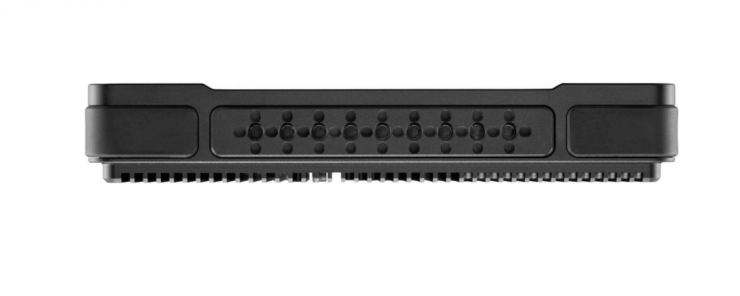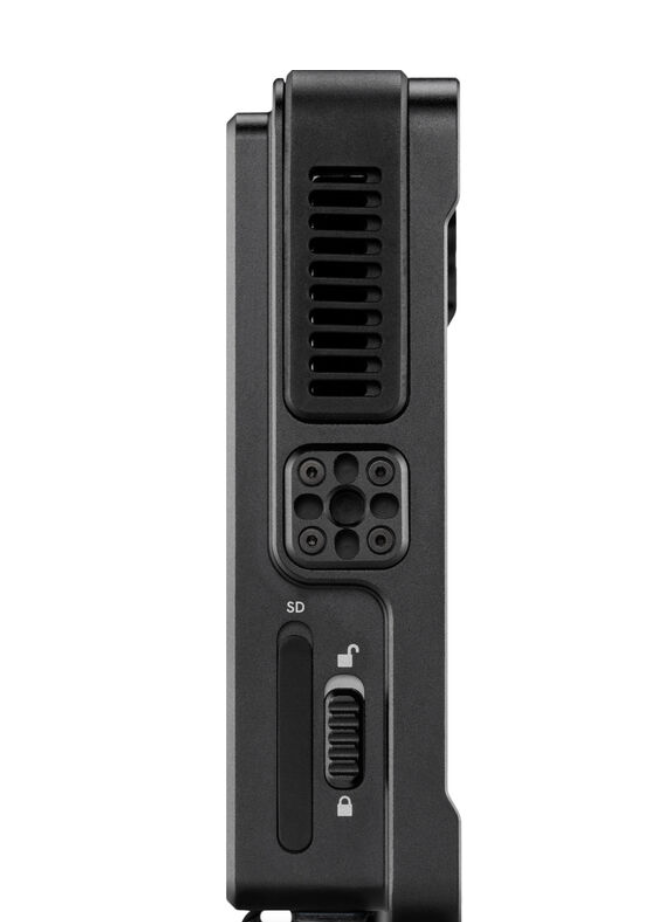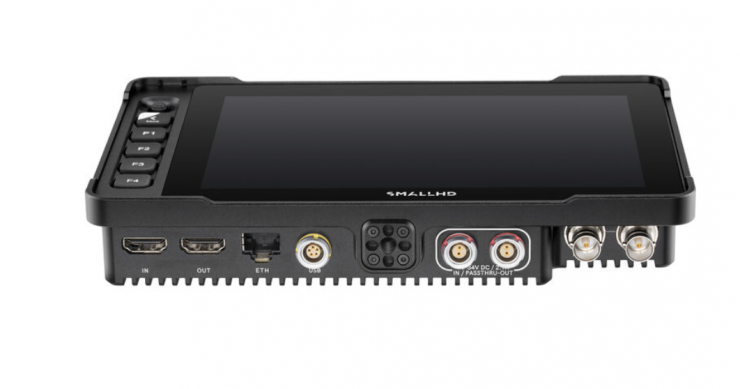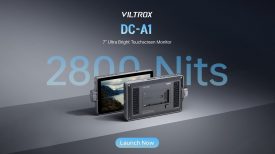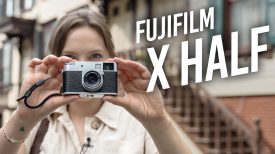
SmallHD has released the new Ultra 7 monitor today. This is an upgrade from the very popular 703 UltraBright with upgraded processing power, features, housing, and accessories for around the same price of $2999 USD. Yes, that is a lot of cash, and this monitor isn’t for everyone, but the PageOS, color accuracy, and build quality are a big part of the success of SmallHD monitors.
SmallHD actually teased the Ultra 7 in December last year.

The Ultra 7 shares some similarities to its smaller sibling the Ultra 5 that was originally announced at IBC 2022, and it is one of three monitors in SmallHD’s Smart 5 Series, which consists of the Ultra 5, Cine 5, and Indie 5 touchscreen displays. Two additional wireless versions of the Ultra 5 (TX/RX) exist. Check out Matt’s review of the ULTRA 5 from last year. I personally own the ULTRA 5, and it’s been a great addition to my kit. Yes, it’s a bit fat and heavier than most 5″ monitors, but it’s bright, and the color is exceptional.
It has been a while since SmallHD last released a high bright 7″ on-camera monitor. While a lot of users prefer smaller sized 5″ monitors, especially when working with small to medium-sized cinema cameras or mirrorless hybrids, a lot of professionals using larger cinema cameras tend to prefer a 7″ monitor.
Ultra 7 Key features
- 7″ 1920 x 1080 Touchscreen Display
- 6G-SDI & HDMI Inputs/Outputs
- Bright 2300 cd/m² LCD Panel
- 5-Pin USB & Ethernet Control Powers
- PageOS 5 User Interface
- SD Card Slot, IP53 Rating
- Onboard Button Controls
- Milled Aluminum Unibody Housing
- Daylight-viewable 7″ touchscreen on-camera monitor with 2300 cd/m² brightness
- Slim, lightweight design with 10-bit 4:2:2 DCI-P3 color, touchscreen LCD panel
- HDMI and 6G-SDI inputs and outputs
- Tactile buttons around the monitor allow you to use the monitor in any condition.
- The PageOS 5 toolset with EL Zone Exposure Assist, best-in-class waveform, false color, Look-Around Camera Control (sold separately), advanced Teradek RT overlays, and more
- Four 1/4″-20 mounting threads on the left, right, bottom, and back of the monitor
- Power using a 2-pin power input
- Optional RED camera control via the 5-pin USB port
- Optional ARRI/Sony VENICE camera control via the Ethernet port
- Durable aluminum chassis
Rugged Build

The Ultra 7 chassis was designed with shock-absorbing bumpers for accidental drops and a raised edge all around to protect the screen when placed face down.

It’s also water-resistant with protection against damp situations. It is not waterproof, but you won’t have to worry as much on your next shoot. It can handle temperatures as low as 0ºC and as high as 40ºC.

The monitor features an IP53 rating and it is fully sealed so that all the electronic components are sealed with caps to protect against dust and water. This is something that sets it apart from the Ultra 5 as that monitor doesn’T have any IP rating.
Touchscreen Display

The SmallHD Ultra 7 On-Camera Touchscreen Monitor features has a 7″ 2300 cd/m² display for viewing in just about any indoor or outdoor environments. It has a contrast ratio of 1000:1 and it covers 95% of DCI-P3 and 98% of REC 709.
The Ultra 7 isn’t as bright as the Ultra 5, which features a 3000 cd/m² display. In saying that, The difference won”t be that noticeable as the display is larger and will perform very well outside. The Ultra 7 is slightly brighter than the existing SmallHD 703 UltraBright On-Camera Monitor that has 2200 nits / cd/m2.

According to SmallHD, the LEDs for the Ultra 7 panels have the highest tolerance for color uniformity. These LEDs are built into an edge-lit panel stack that diffuses and focuses the light through a quantum-dot film,
ensuring the purest color accuracy on its panels. SmallHD claims that the result is an extremely bright monitor with excellent image fidelity.
The screen is listed as 10-Bit, but it isn’t a true 10-bit display, instead, it features the commonly used 10-bit (8+2). Some potential buyers may find this a little disappointing given the high cost of the monitor. However, what you should clearly know is that no panels with true 10-bit color exist in this size, everyone just uses dithering to achieve the 10-bit target. 10-bit (8+2) is pretty much imperceptible to 99% of people
A lot of companies list their monitors as 10-bit even though they are really using a 10-bit (8+2 FRC) panel. FRC stands for Frame Rate Control Technology and an 8+2 FRC panel is basically a way of trying to approximate the color reproduction of a true 10-bit panel. A true 10-bit monitor can display 1024 shades of color, whereas a 10-bit (8+2 FRC) panel can only truly display 256 shades. So what a 10-bit (8+2 FRC) panel does is artificially create in-between shades of color by quickly shifting the pixels to go between certain shades of colors.
For example, you would show the main shade of one color for 75% of the time and then another one for 25% of the time. This creates an illusion for the viewer that they are actually seeing more colors than what can actually be displayed.
8+2 FRC can be very hard to distinguish from an actual 10-bit panel. As I already mentioned, most people couldn’t tell the difference between an 8+2 or a true 10-bit display.
Like the ULTRA 5 the ULTRA 7 has four front shortcut buttons that can be custom programmed.
Inputs & outputs

In the menu, you can choose the input configuration and you can upload 3D LUTs via the SD card slot.
- 1 x BNC 6G-SDI Output (12G BNC compatible)
- 1 x HDMI Output
- 1x BNC 6G input (12G BNC compatible)
- 1 x HDMI Input
- 2x LEMO 10-34V 2-pin 2.9A In/passthrough-out
- 1 x LEMO 5-Pin Output
- 1 x RJ45 Output
- 1 x 1/8″ / 3.5 mm Headphone Output

Above you can see what input and output signals the Ultra 5 can deal with.
Multi-View

You will be able to eventually be able to view 2 camera feeds simultaneously while filling vertical 9×16 screen with two 16:9 images on its vertical axis. This will allow you to use the same Multi-View tools that are in SmallHD’s 4K Production Monitors.
Size & Weight

The Ultra 7 weighs 2.0 lb / 900 g and it has physical dimensions of 8.2 x 5.1 x 1.36″ / 209 x 130 x 34.66 mm.
As a comparison the SmallHD 703 UltraBright On-Camera Monitor weighs 1.7 lb / 748 g and has physical dimensions of 4.9 x 8.4 x 1.1″ / 12.4 x 21.3 x 2.9 cm.
Power
Power is delivered to the Ultra 7 via 2-pin LEMO ports or separately available Gold/V-mount micro battery plates. There are no Sony L-type plates available for the ULTRA 5.
Mounting Options
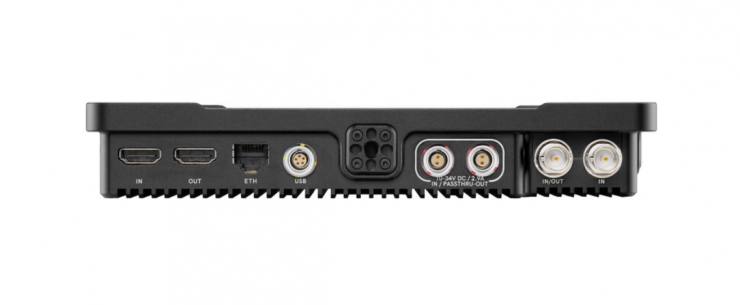
Display Tools
SmallHD PageOS is arguably the best out there. It’s simple to navigate and offers many useful tools and features.
Below is a full list of tools and features.
- Pixel zoom: 2x and 4x with pinch-zoom
- Aspect ratios: Preset and customizable
- DSLR scale: Canon 5D Mk II and Canon 7D
- Custom scale: Underscan only
- Anamorphic de-squeeze: 1.33x, 1.5x, 1.66x, 2.0x
- Image flip: Auto and manual
- Image rotation: Auto and manual
- Cross conversion: HDMI to SDI, SDI to HDMI
- Color focus assist: Adjustable style and intensity
- Peaking: Adjustable intensity
- False color: Spectrum, ARRI-style, and customizable
- Zebra: Dual, customizable
- Waveform: Luma and RGB, customizable with region-of-interest highlighting
- Vectorscope
- RGB parade, customizable
- Histogram: Luma and RGB
- Image capture, with a dedicated button and image gallery
- Custom LUTs: Load as looks on pages or as system-wide calibration via the settings menu
- LUT import: Via SD card or USB storage device
- Image overlay: Opacity slider and blink setting
- Image capture
- Audio meters: Up to eight channels
EL ZONE

The Ultra 7 can also utilize EL Zone, which was developed by legendary cinematographer, Ed Lachman, ASC. EL Zone is a stop-based exposure map
tool that works like a virtual spot meter, replacing IRE xposure values with stops. Sensor data from the camera provides a reference point, and a false colo represents each stop above and below 18% gray, allowing for easier, more intuitive on-set communication.
Folding Magnetic Sunhood

There is a new optional Ultra 7 Sunhood available for the monitor that costs $199 USD.

It is similar to an iPad cover and it uses small magnets to stay together so it won’t sag or droop. This foldable sunhood can be mounted to the Ultra 7 without any tools, the side flaps and the top flap hold together magnetically. The outside material is strong and durable, the inside microfiber material protects the display and prevents reflections. When closed, the sun hood also provides total protection for the panel.
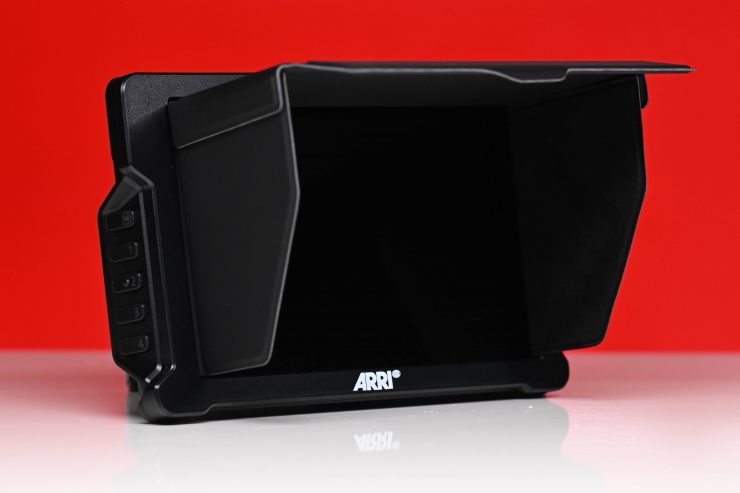
This sunhood is very similar to the one that comes with the ARRI CCM-1 that is made by SmallHD.
Teradek Bolt 6 Integration

The SmallHD Ultra 7 monitor is also available with Bolt integration; what’s new with the Ultra 7 integration, apart from its predecessors, is the internal antenna design and a fully-contained Teradek Bolt 6, making it more compact and less likely to experience damage.

This integration is useful on set because it utilizes the clear airwaves of the newly open 6GHz spectrum, with RX and TX models that are compatible with any Teradek Bolt 6 and backward-compatible with any Bolt 4K system in 5GHz mode. The Transmission is up to 1500′ with the ULTRA 7.
The Ultra 7 with Bolt 6 integrations will follow the release of the flagship monitor in early 2024.
Price & Availability
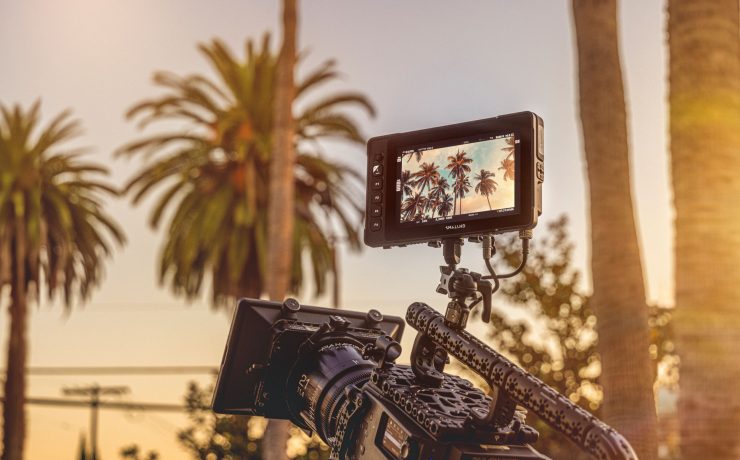
The SmallHD Ultra 7 is now available to pre-order for $2,999 USD. While it’s expensive, it’s designed for heavy use and should last longer than most monitors available. I love my ULTRA 5 a lot. It’s fat and a little heavy but delivers.


